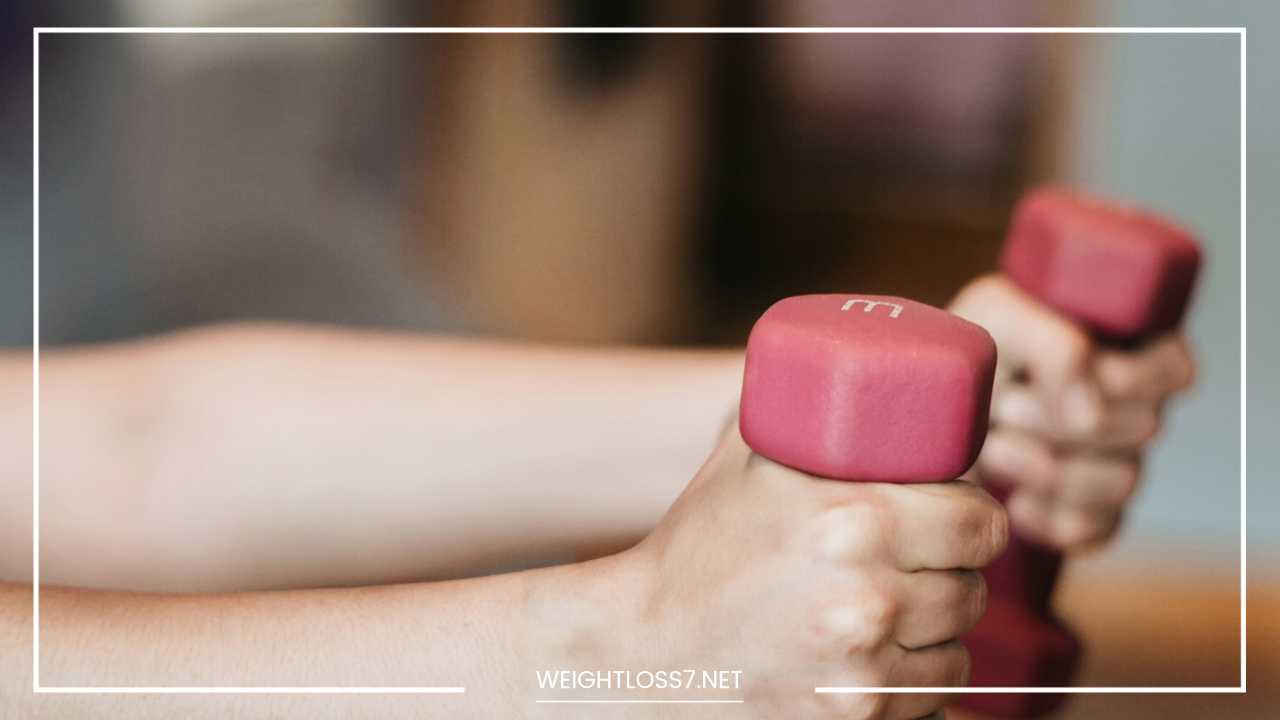Lose Weight for Good: A Sustainable Guide to Healthy Habits

Lose Weight
Shedding Pounds for a Healthier You: A Comprehensive Guide to Sustainable Weight Loss
Let’s face it, wading through the swamp of weight loss advice can feel like navigating a murky maze. Crash diets with unrealistic promises, conflicting information, and a constant barrage of fads – it’s enough to make anyone throw their hands up in frustration.
But what if there was another way? A path to weight loss that’s sustainable, healthy, and empowering? This blog post is your roadmap to exactly that.
We’ll ditch the deprivation and quick fixes that leave you feeling sluggish and defeated. Instead, we’ll focus on building a foundation of healthy habits that will not only help you shed pounds but also improve your overall well-being.
This guide will delve deeper into the science of weight loss, explore a variety of dietary approaches, and provide practical tips for incorporating exercise and healthy habits into your daily routine.
Understanding the Science: Calories and Beyond
While the core principle of weight loss boils down to energy balance (calories in vs. calories out), it’s important to acknowledge that it’s not always a simple equation. Our bodies are complex machines, and numerous factors influence weight management.
- Metabolism: This refers to the rate at which your body burns calories for energy. Age, muscle mass, genetics, and hormones all play a role in metabolic rate.
- Gut Health: A healthy gut microbiome has been linked to improved weight regulation. Conversely, an imbalanced gut microbiome can contribute to weight gain and metabolic issues.
- Micronutrients: Vitamins and minerals play a crucial role in numerous bodily functions, including metabolism and hormone regulation. Deficiencies in certain micronutrients can hinder weight loss efforts.
- Sleep: When sleep-deprived, our bodies produce more ghrelin (the hunger hormone) and less leptin (the satiety hormone), making us hungrier and more prone to overeating.
Understanding these factors will help you create a weight loss plan that addresses your unique needs, not just a generic calorie-counting approach.
Fueling Your Body: Exploring Dietary Strategies
No single diet fits everyone. Here’s a breakdown of some popular dietary approaches, along with their pros and cons:
- The Mediterranean Diet: This heart-healthy diet emphasizes fruits, vegetables, whole grains, legumes, healthy fats like olive oil, and lean protein sources like fish. It’s a well-balanced and sustainable approach for weight loss and overall health.
- The DASH Diet: Designed to lower blood pressure, the DASH diet focuses on fruits, vegetables, whole grains, low-fat dairy, and lean protein. It can also be beneficial for weight management.
- The Flexitarian Diet: This approach encourages a mostly plant-based diet with occasional lean protein sources. It’s a flexible option for those who want to incorporate more vegetarian meals without completely eliminating meat.
- The Volumetrics Diet: This diet prioritizes low-calorie, high-volume foods like fruits, vegetables, and broth-based soups. It promotes satiety and helps with portion control.
Remember: It’s crucial to consult a doctor or registered dietitian before starting any new diet, especially if you have any underlying health conditions. They can help you determine the best approach for your individual needs and create a personalized plan.
Beyond the Label: Building a Balanced Plate
Here are some practical tips to incorporate into your daily meals, regardless of the specific diet you choose:
- Make Half Your Plate Non-Starchy Vegetables: Fill your plate with a rainbow of veggies like broccoli, leafy greens, bell peppers, and zucchini. They’re low in calories, high in nutrients, and keep you feeling full.
- Choose Whole Grains Over Refined Grains: Swap out white bread, pasta, and rice for whole-wheat options. Whole grains provide fiber, which keeps you feeling satisfied and promotes gut health.
- Prioritize Lean Protein Sources: Include lean protein like chicken, fish, beans, lentils, or tofu in your meals. Protein helps build muscle mass, which boosts metabolism and burns more calories at rest.
- Healthy Fats are Your Friends: Don’t fear healthy fats like avocados, nuts, and olive oil. They promote satiety, provide essential nutrients, and add flavor to your meals.
- Limit Processed Foods: These are often loaded with unhealthy fats, added sugars, and sodium. They contribute to weight gain and offer little nutritional value.
- Practice Mindful Eating: Pay attention to hunger and fullness cues. Eat slowly, savor your food, and avoid distractions like screens while eating.
- Cook More Meals at Home: This gives you control over ingredients and portion sizes. Experiment with healthy recipes and discover new favorites.
Moving Your Body: Exercise for Weight Loss and Beyond
Exercise plays a crucial role in weight loss and overall health. It not only helps you burn calories but also offers a plethora of other benefits:
- Improved Muscle Mass: Building muscle mass boosts your metabolism, meaning you burn more calories even at rest.
- Enhanced Mood and Stress Reduction: Exercise releases endorphins, which have mood-boosting and stress-relieving effects.
- Stronger Bones and Joints: Regular physical activity helps maintain bone density and reduces the risk of osteoporosis and injuries.
- Better Sleep: Exercise can improve sleep quality, leading to increased energy levels and better overall well-being.
- Reduced Risk of Chronic Diseases: Regular physical activity helps prevent chronic diseases like heart disease, type 2 diabetes, and some cancers.
Finding Activities You Enjoy: Making Exercise a Habit
Let’s face it, forcing yourself onto a treadmill for hours won’t be sustainable for most people. The key is to find activities you genuinely enjoy. Here are some tips to get you started:
- Explore Different Options: There’s a world of exercise options out there! From dancing and swimming to hiking and biking, find activities that suit your interests and fitness level.
- Start Slow and Gradually Increase Intensity: Don’t jump into strenuous workouts if you’re new to exercise. Begin with manageable routines and gradually increase duration and intensity as your fitness improves.
- Find a Workout Buddy: Partnering up with a friend or family member can make exercise more social and enjoyable.
- Embrace the Outdoors: Take advantage of nature’s gym! Go for a brisk walk, jog, or bike ride in the park.
- Incorporate Movement Throughout Your Day: Take the stairs instead of the elevator, park further away from your destination, or do some stretches during your work breaks. Every bit of movement counts!
Aiming for Balance: Building a Sustainable Exercise Routine
The American College of Sports Medicine recommends at least 150 minutes of moderate-intensity aerobic activity or 75 minutes of vigorous-intensity aerobic activity per week, combined with strength training exercises that target all major muscle groups at least twice a week.
Here are some examples of moderate and vigorous-intensity activities:
- Moderate-Intensity: Brisk walking, swimming, cycling (leisurely pace), dancing (moderate effort)
- Vigorous-Intensity: Running, jogging, cycling (fast pace), uphill walking, high-intensity interval training (HIIT)
Strength Training: Building Muscle for Long-Term Benefits
Strength training doesn’t mean you have to bulk up like a bodybuilder. Even incorporating bodyweight exercises or light weights into your routine can make a significant difference. Here are some benefits of strength training for weight loss:
- Increased Muscle Mass: As mentioned earlier, muscle burns more calories at rest, boosting your metabolism and aiding in weight management.
- Improved Bone Density: Strength training helps maintain strong bones and reduces the risk of osteoporosis.
- Enhanced Body Composition: Building muscle can help you achieve a more toned and sculpted physique.
Remember: It’s always best to consult a doctor or certified personal trainer before starting a new exercise program, especially if you have any pre-existing health conditions. They can help you design a safe and effective routine tailored to your individual needs and goals.
Beyond Diet and Exercise: Habits for Long-Term Success
Sustainable weight loss is about creating a healthy lifestyle you can maintain for the long haul. Here are some additional habits that can support your weight loss journey and overall well-being:
- Prioritize Sleep: Aim for 7-8 hours of quality sleep each night. When sleep-deprived, our bodies produce more ghrelin (the hunger hormone) and less leptin (the satiety hormone), making us hungrier and more likely to overeat.
- Manage Stress: Chronic stress can lead to unhealthy food choices and weight gain. Practice relaxation techniques like meditation, yoga, or deep breathing exercises to manage stress effectively.
- Stay Hydrated: Water is essential for numerous bodily functions, including digestion and metabolism. Aim for eight glasses of water daily.
- Find Your Support System: Surround yourself with people who encourage your healthy lifestyle choices. Having a support system can boost your motivation and keep you accountable on your weight loss journey.
- Practice Self-Compassion: Weight loss can be challenging. There will be setbacks and plateaus. Be kind to yourself, celebrate your non-scale victories (improved energy, better sleep), and remember that progress, not perfection, is key.
Final Word: Embracing a Healthier You
Sustainable weight loss is not about a quick fix or a temporary crash diet. It’s about building a healthy lifestyle that nourishes your body and mind, empowers you to move your body with joy, and fosters a sense of well-being that extends far beyond the numbers on the scale.
Making Weight Loss a Lasting Lifestyle Change
Here are some final thoughts to keep you motivated on your weight loss journey:
- Focus on How You Feel: Instead of obsessing over the scale, pay attention to how you feel. Do you have more energy? Are you sleeping better? Do you feel stronger and more confident? These are all positive indicators of progress.
- Celebrate Non-Scale Victories: Weight loss is not always a linear journey. Celebrate your non-scale victories, big or small. Fitting into your favorite pair of jeans again, conquering a new exercise routine, or simply making healthier food choices are all reasons to be proud.
- Find Inspiration: Surround yourself with positive influences. Follow inspiring weight loss journeys on social media, read success stories, or watch motivational documentaries.
- Make it a Family Affair: Involve your family in your healthy lifestyle changes. Cook healthy meals together, go for walks as a family, or try a new activity everyone can enjoy.
- Enjoy the Journey: Focus on the positive aspects of creating a healthier lifestyle. Experiment with new recipes, discover the joy of movement, and appreciate the newfound strength and resilience in your body.
Remember: Weight loss is a marathon, not a sprint. There will be bumps along the road, but with dedication, self-compassion, and the right tools, you can achieve your goals and embrace a healthier, happier you.
Taking the Next Step
If you’re ready to embark on your weight loss journey, here are some resources to get you started:
- Consult a Doctor or Registered Dietitian: They can help you create a safe and effective personalized plan based on your individual needs and health conditions.
- Explore Online Resources: There’s a wealth of information available online, from healthy recipes and workout routines to weight loss communities and support groups.
- Find a Fitness App: Many apps offer personalized workout plans, track your progress, and provide motivation.
- Start Small and Celebrate Every Step: Don’t try to overhaul your entire life overnight. Make small, sustainable changes and celebrate your progress along the way.
By following the tips and strategies outlined in this guide, you can ditch the fads, embrace a healthy lifestyle, and achieve lasting weight loss success. Remember, you’ve got this!

















